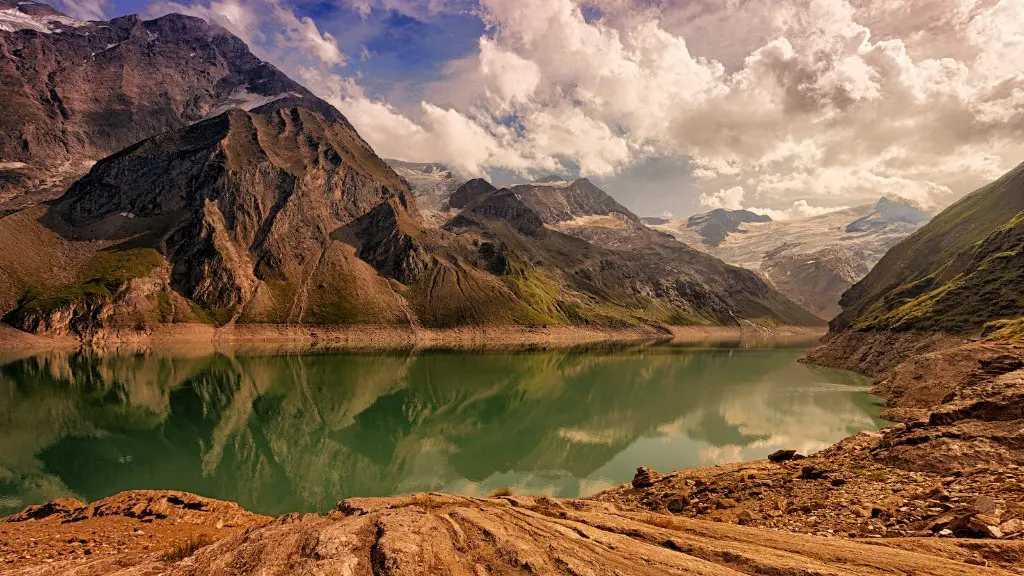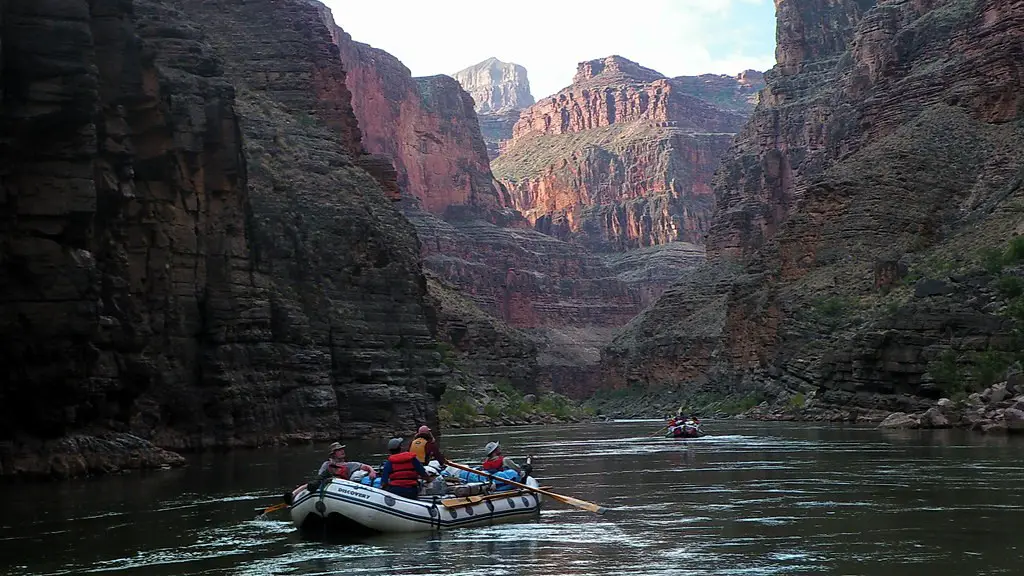Mississippi river length
The Mississippi River is considered to be one of the world’s longest rivers, and its length adds up to an amazing 3,734 km or 2,320 miles. Its source is located in the United States, in Lake Itasca, in the state of Minnesota, and it ends in the Gulf of Mexico, on the Louisiana border. As one of the major rivers of North America, it is responsible for providing recreation and commerce to the region, and is an important element in the general ecology of the area, as it sprawls through ten states.
Its impressive drainage basin is approximately 2,981,000 km² or 1,150,000 sq mi, and most part of it lies within the United states. Its width varies and can go up to 30 km during wetter seasons, but its average is of about 3 km. The Mississippi is divided into two parts, namely the Upper Mississippi and the Lower Mississippi. The Upper Mississippi is considered to be from its source, which is Lake Itasca, to its junction with River Ohio, which is situated in Illinois. The Lower Mississippi, is all the part of the river in charge of water drainage downstream of the Ohio junction. The way that its waters shape the landscape of the area, has been vital in the development of the states through which it flows, and also in the agriculture, economy, and tourism of the region. Additionally, its shores are dotted with native plant and animal species which have adapted to the changing river environment.
This river is said to be the lifeblood of the Mississippi Valley region, and has nourished the area since ancient times, with early Indigenous people and others moving along the Mississippi waterways. It was also a major contributor to early American exploration, as expeditions were sent to map and study its tributaries and wetlands. Today, its waters are not only still inspiring exploration, but also working towards preserving the cultural heritage of the area, and many people engaging in local crafts, from hair-braiding to quillwork, use materials from the river.
Throughout its length, the Mississippi River is constantly changing. Its width, water levels, salinity, and water temperature levels vary, depending on the season, the topography and other natural causes. Its flow rate has been steadily increasing due to deforestation and flooding. However, the river is managed through a system of tributary engineering as watershed management and flood control programs, not only in its own watershed, but also in other related basins. All of this has been possible due to immense research efforts made by hydrology, meteorology, biology and other science fields, which are striving to iron out the impact of these changes and to come up with ways to deal with them.
Types of fish in the Mississippi River
The Mississippi River is home to a variety of fish species, from river herring and sturgeons, to bass and catfish. Many of these species are legally protected, and the United States Fish and Wildlife Service has also done a great job in actively monitoring the biodiversity of this particularly important area. Some of the most commonly encountered fish are the buffalo, the blue, flathead, northern and black crappie, the largemouth and smallmouth bass, and the northern pike.
The Mississippi River is a great place for those interested in recreational fishing, as the temperate climate in the area allows for a variety of fish to live there year-round. Besides the awesome array of fish that can be found in the Mississippi, anglers can also catch other fish species such as carp, pike and gar. What should be noted, is that fishing rules and regulations slightly vary between states, so make sure to check with local officials, in order to determine the best spots and practices for fishing.
The Mississippi River is also home to many threatened and endangered species, like the pallid sturgeon, river pearl mussels, paddlefish and lake sturgeon. Given the extent of the river and its basin, it also provides a wide variety of plant species, which in turn can provide great cover, nutrition, and hunting grounds to many species of animals.
Uses of the Mississippi River
The Mississippi River has myriad uses. As one of the main waterways of North America, it is heavily trafficked by commercial vessels hauling goods, traveling at fast and constant speeds, along its course. Its transportation potential is also of great regional importance, given the long distances of North America and its need to transport both domestic and international goods.
The Mississippi River also plays a vital role in waterway transportation, as it connects to many of the smaller rivers and creeks in its basin and watershed. Cruises, steamboats and a variety of recreational vessels can be seen using the river during summer months, providing a unique experience for locals and tourists alike. The locks and dams along the river also allow for other navigation approaches.
Finally, its waters are essential for the ecology of the area, and its reservoirs as well as its wetlands can be considered as the ‘lungs’ of the region, providing clean air for people to breathe and helping maintain local ecosystems.
Risk of flooding on the Mississippi
Due to the changing climate which is increasingly affecting North America with severe floods, the risk of flooding in the Mississippi region has become a pressing issue. Given its massive drainage basin, the Mississippi is particularly affected by intense rains, as it can collect excess water from states such as Oklahoma and Arkansas, as well as other areas of the US.
The US Army Corps of Engineers is actively monitoring the river’s watershed, tributaries and related areas, in order to predict and ultimately prevent flooding. Dams and locks have been built along the river course, which can be closed and opened during heavy rains and the dry months, thus providing control over the river’s flow.
Educational programs and efforts made by the local governments and non-profit organizations, together with systematic monitoring, are some of the best strategies used to lessen the risks posed by the flooding of the Mississippi River.
Pollution in the Mississippi River
Pollution of the river is one of the major issues that affect the Mississippi, as due to its wide drainage basin, it can collect the runoff of many states. For this reason, many industrial facilities have dumped contaminants in its waters and tributaries, while runoff from agricultural lands and urban areas have also created a strain on its environment.
The river has seen a great effort on behalf of the US federal government to try and restore the water quality of the river, through its Clean Water Act, which also demands substantial changes to the management of the river’s water resources.
These efforts have been led by innovators, universities and environmental activists alike, who are trying to reduce the pollution levels in the Mississippi and its associated streams. For this purpose, many treatments have been implemented downstream of industrial facilities, in order to reduce the amount of contaminants entering the waters.
What causes the Mississippi River to flood?
Flooding of the Mississippi can be caused by several factors such as heavy rain falls, melting snow, and formed ice dams. A major flooding event can occur in the lower portion of the river as it empties into the Gulf of Mexico and carries large amounts of water from upstream. The overflow of the river can be caused by multiple tributaries carrying their water downstream and overflowing the banks of the Mississippi River, or when natural water embankments are breached by the river.
Rainfall and snowmelt are the most common causes of flooding. Rapid snowmelt in the spring and heavier than expected rainfall can cause rivers to swell and overflow their banks. This is often compounded by long periods of heavy rainfall, causing waterways to be filled and forcing the excess water to overflow their banks. Additionally, flooding can be caused when severe weather conditions occur, such as thunderstorms and hurricanes, as they can result in extreme and rapid runoff which may cause flooding.
Proper and timely water management strategies, such as keeping an eye on the levels of the river, issuing warnings and closing the gates of the locks and dams at the perfect pace and moment, can help mitigate the risks posed by the floods in the Mississippi River.
Dams on the Mississippi River
The engineering of the Mississippi River has been a long and complex task, which began back in the early 1800s with the first navigational projects around the river. In order to improve water navigation and transportation, a series of locks and dams were built along the river course, from its source to the Gulf of Mexico. The building of the dams was part of a federal initiative, starting in 1950. This was also to help with the river’s flood management as these structures were built to increase the storage of water and to reduce the risk of flooding.
Today, the river has over three hundred locks and dams in its navigable area. These are used to regulate the flow rate of the river, and the water levels in its reservoirs and embankments, so that it is safe to transit ships and boats in the area. The locks and dams also can be used to store water in special gates, in order to reduce the flooding events in the region, by releasing the overflow gradually.
The construction of the dams along the Mississippi River has been critical for the management of its water flow and its associated risks, but it is also an invaluable factor in the development of the commerce and of the entire region, providing many opportunities in trade, transportation and tourism.





